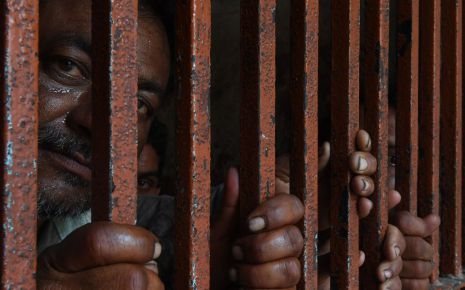Plea Bargaining In India: A Ship With Holes
Plea bargaining, alternatively known as trial wavers, refers to an
agreement with the defendant to waive full trial rights in exchange for a
concession by the state. It is a legal process under which criminal defendants
agree to accept guilt and/or cooperate with the investigative authority in
exchange for some benefit from the state. These benefits are most commonly in
the form of reduced charges and/or lower sentences.
Depending upon the type of concession granted to the defendant, plea bargaining could fall into two main categories. One is charge bargaining, wherein the prosecutor promises to reduce or dismiss some of the charges brought against the defendant, in exchange for a guilty plea. On the other hand, under sentence bargaining, a prosecutor promises to recommend a specific sentence for the defendant or promises to abstain from doing the same, in exchange for a guilty plea. Both ultimately reduce the defendant's sentence.
The popularity of plea bargaining stems from its results. It helps create an efficient criminal justice system that secures convictions quickly, and at lower costs. This alternative to cumbersome and expensive litigation has lured many countries to experiment with the process, including India.
Public opinion towards plea bargaining has always been mixed. Some of the reasons in its support include saving public money by reducing the number of trials, saving time and costs of the parties involved, reducing uncertainty from the legal process, creating a more effective justice delivery system, etc. Those opposing plea bargainings feel that it is too lenient a method to deal with the defendants and that the justice system treats them with too much softness. They also claim that the process will be unfair to the victims if defendants are given such concessions.
Thus, the idea of incorporating plea bargaining in India faced public dissatisfaction at first. It was thought of as an immoral compromise in criminal cases. On one hand, the Law Commission of India was persistently recommending the introduction of plea bargaining, and on the other, the Supreme Court of India was dealing with the moral questions surrounding it and apprehending its consequences because of dishonest circumstances prevailing around. For instance, in Murlidhar Meghraj Loya v. State of Maharashtra, the court referred to plea bargains as, advance arrangements (that) please everyone except the distant victim, the silent society.
Concerns towards trial wavers included that India’s social conditions do not justify its introduction, that the pressures from prosecuting agencies could result in convictions of the innocent, that the counsel representing the accused would be now willing to advise confession invoking scheme, that plea bargaining may increase the incidence of crime and criminals could slip through the net with impunity.[1]
A shift in judicial thinking came later, and courts began to recognize the utility of plea bargaining as an alternative to trials to deal with huge arrears in criminal cases, and reduce cumbersome litigation.
According to the Indian model, plea bargaining is to be used in criminal cases where offences carry a maximum sentence of up to seven years, except those affecting the national socio-economic condition, or when victims are women and children.[2] It can only be initiated by the defendant after the case reaches the judicial stage, and defendants with a prior conviction for the same offence are barred from using the process.[3] The Magistrate needs to be satisfied that the defendant is opting for plea bargaining voluntarily. Following this, the public prosecutor, investigating officer, and victim are called to court, and in case of there being no police investigation, only the victim gets called.[4]
All parties have to reach a Mutually Satisfactory Disposition together. Here, the court has to ensure that the entire process takes place voluntarily. There are no negotiations on the sentence of the defendant, but only the compensation for the victim is fixed by the parties.[5] Once a Disposition is reached, the court hears the parties for finalising the sentence. The court retains some discretion to release a defendant on probation as per law.
Finally, the sentencing takes place in the following manner- where offences have a mandatory minimum sentence, the court awards half of that sentence. But in cases where there is no such minimum fixed, the court proceeds to award one-fourth of the maximum possible sentence for that offence.
In 2016, it was about 4,887 cases out of 11,107,472, bringing it down to 0.043%. The year 2017 saw some increase to 0.27%, with 31,857 cases out of 11,524,490 going for plea bargaining. However, this was not a continuing trend, since, in 2018, the cases saw an absolute decrease and only 20,062 out of 12,106,309, with a mere 0.16% of cases being disposed of through plea bargaining. It is unfortunate to note that this statistic hasn’t even crossed a mere 1% in 15 years.
During this time, case pendency continued to rise, though not as rapidly as before. In the same way, data on the number of undertrial prisoners also shows an increase from 2006. Thus, plea bargaining failed to fulfil either of the two objectives it was envisaged to achieve in India.
Investigations in India are wholly in the hands of the police. Indian prosecutors, appointed by the government, do not participate in investigations at all. They receive details about a case once it reaches the judicial stage, i.e. when the matter moves to the court. Moreover, prosecutors in district courts usually have meagre resources, which they have to use to handle a large number of cases. Prosecutors and judges hardly ever handle their cases from start to finish, considering both the frequency of administrative transfers and the lifespan of a case averaging beyond two years. Thus, Indian prosecutors and judges don't have the same level of incentive as their American counterparts to actively root for plea bargaining.
Plea bargaining gained momentum in the U.S. because it successfully provided leverage to prosecutors, which they could exercise over defendants to induce them to plead guilty and waive trials. However, the system designed in India notably lacks any such leverage given to the public prosecutors or the judges involved. For instance, prosecutors have little space to participate in the bargaining process or induce a plea, and judges cannot even reject a decided settlement.
Moreover, public prosecutors in India simply do not have the time to focus on resolving each case on their docket by going an extra mile since they have to handle a huge quantum of cases using the same scanty resources. Even though judges have a natural incentive to quickly dispose of cases, they cannot be an active part of the process in order to eliminate doubts of coercion over the defendants.
A person who pleads guilty has to face the moral repercussions of a conviction in society. From the perspective of financially secure defendants, it is better to continue with trials than plead guilty and face those consequences. Considering the high rate of acquittal in Indian criminal cases after years of delay, such defendants can afford to drag out their trials and ultimately secure an acquittal.
For defendants without financial means, the stigma attached to a conviction plays a vital role in them steering clear of plea bargaining. Most are aware of the practical difficulties in getting jobs faced by convicted persons. Other reasons that sway them include the inability to compensate the victim, absence of a victim in petty cases (such as theft etc.) and lack of awareness about the process itself.
Apart from this, in cases where the defendant wishes to settle matters with the complainant or prosecutor, they can alternatively apply for compounding the offences,[9] move the concerned High Court to terminate cases as an exercise of extraordinary jurisdiction,[10] or even move to dismiss charges or withdraw the case at any time before conclusion, for good reason.[11]
It must be realised that plea bargaining in India is not the efficient two-party system that works the U.S. Instead, it is a tri-partite process observed by the judge. The actual bargaining does not even involve the defendant’s interests, rather its purpose is to settle the victim’s compensation only. Placing greater value on the victim participation herein proves detrimental. A victim's emotional pain may not always be accurately translated monetarily to satisfy his retributive interests. Besides, the defendant may not always be able to pay the amount decided. In such a stalemate, as discussed before, neither the prosecutor nor the judge has enough incentive to push for a better bargain.
This imbalance could also work in the other direction if the defendant is well off or well connected. It will be unfair to the victims in such cases, as the punishment may be too soft for the defendants. Thus, in one case or another, the risk of imbalance of power will always remain when the judges have no discretionary powers available in plea bargaining.
Conclusion
Plea bargaining was introduced in India about 15 years ago. However, until now, not even 0.5% of the total criminal cases pending in the country have been disposed of using this process. Clearly, this experiment has failed to leave a mark in the criminal justice system, and the flaws in the Indian model are solely to blame. It is time to rethink plea bargaining in India and the only path towards redemption is to go back to the drawing board, and make it a more appealing option for all actors involved.
End-Notes:
Depending upon the type of concession granted to the defendant, plea bargaining could fall into two main categories. One is charge bargaining, wherein the prosecutor promises to reduce or dismiss some of the charges brought against the defendant, in exchange for a guilty plea. On the other hand, under sentence bargaining, a prosecutor promises to recommend a specific sentence for the defendant or promises to abstain from doing the same, in exchange for a guilty plea. Both ultimately reduce the defendant's sentence.
The popularity of plea bargaining stems from its results. It helps create an efficient criminal justice system that secures convictions quickly, and at lower costs. This alternative to cumbersome and expensive litigation has lured many countries to experiment with the process, including India.
India’s attempt to recreate the U.S. model
The success of this process in the U.S. pushed Indian lawmakers to incorporate plea bargaining in the Indian criminal justice system. The design of plea bargaining in the American system offers sufficient incentives to all actors involved to fruitfully waive the traditional trial procedures. In the criminal justice systems of the 50 U.S. states, over 95 per cent of all criminal cases are disposed of through the entry of a guilty plea. The percentage is even higher in the federal system. Time and again, the Supreme Court of the United States has approved plea bargaining on the assumption that defendants convicted so would ordinarily have been convicted if a trial had taken place.Public opinion towards plea bargaining has always been mixed. Some of the reasons in its support include saving public money by reducing the number of trials, saving time and costs of the parties involved, reducing uncertainty from the legal process, creating a more effective justice delivery system, etc. Those opposing plea bargainings feel that it is too lenient a method to deal with the defendants and that the justice system treats them with too much softness. They also claim that the process will be unfair to the victims if defendants are given such concessions.
Thus, the idea of incorporating plea bargaining in India faced public dissatisfaction at first. It was thought of as an immoral compromise in criminal cases. On one hand, the Law Commission of India was persistently recommending the introduction of plea bargaining, and on the other, the Supreme Court of India was dealing with the moral questions surrounding it and apprehending its consequences because of dishonest circumstances prevailing around. For instance, in Murlidhar Meghraj Loya v. State of Maharashtra, the court referred to plea bargains as, advance arrangements (that) please everyone except the distant victim, the silent society.
Concerns towards trial wavers included that India’s social conditions do not justify its introduction, that the pressures from prosecuting agencies could result in convictions of the innocent, that the counsel representing the accused would be now willing to advise confession invoking scheme, that plea bargaining may increase the incidence of crime and criminals could slip through the net with impunity.[1]
A shift in judicial thinking came later, and courts began to recognize the utility of plea bargaining as an alternative to trials to deal with huge arrears in criminal cases, and reduce cumbersome litigation.
Plea bargaining: India’s plan
The process of plea bargaining thus was brought in through criminal law reforms as introduced in 2005. Section 4 of the Criminal Law (Amendment) Act of 2005 introduced Chapter XXI-A to the Code of Criminal Procedure, with sections 265A to 265L coming into effect on 5th July, 2006. These criminal law reforms had also ambitiously aimed to release prisoners on bail, in cases where they had already been detained for half of the possible maximum sentence they could be awarded if convicted. Hence it is fair to state that the goal of Indian lawmakers behind the amendment was to minimize the delay in disposal of criminal cases and empty overcrowded prisons.According to the Indian model, plea bargaining is to be used in criminal cases where offences carry a maximum sentence of up to seven years, except those affecting the national socio-economic condition, or when victims are women and children.[2] It can only be initiated by the defendant after the case reaches the judicial stage, and defendants with a prior conviction for the same offence are barred from using the process.[3] The Magistrate needs to be satisfied that the defendant is opting for plea bargaining voluntarily. Following this, the public prosecutor, investigating officer, and victim are called to court, and in case of there being no police investigation, only the victim gets called.[4]
All parties have to reach a Mutually Satisfactory Disposition together. Here, the court has to ensure that the entire process takes place voluntarily. There are no negotiations on the sentence of the defendant, but only the compensation for the victim is fixed by the parties.[5] Once a Disposition is reached, the court hears the parties for finalising the sentence. The court retains some discretion to release a defendant on probation as per law.
Finally, the sentencing takes place in the following manner- where offences have a mandatory minimum sentence, the court awards half of that sentence. But in cases where there is no such minimum fixed, the court proceeds to award one-fourth of the maximum possible sentence for that offence.
Failure to make an impact
The data collected by the government starting 2015 clearly showed the lack of usage of the plea bargaining process in India. In 2015, only 4,816 cases out of a total number of 10,502,256 cases pending for trial under the general penal law went for plea bargaining, i.e. a mere 0.045%.In 2016, it was about 4,887 cases out of 11,107,472, bringing it down to 0.043%. The year 2017 saw some increase to 0.27%, with 31,857 cases out of 11,524,490 going for plea bargaining. However, this was not a continuing trend, since, in 2018, the cases saw an absolute decrease and only 20,062 out of 12,106,309, with a mere 0.16% of cases being disposed of through plea bargaining. It is unfortunate to note that this statistic hasn’t even crossed a mere 1% in 15 years.
During this time, case pendency continued to rise, though not as rapidly as before. In the same way, data on the number of undertrial prisoners also shows an increase from 2006. Thus, plea bargaining failed to fulfil either of the two objectives it was envisaged to achieve in India.
Lack of appeal in the Indian criminal justice system?
In the U.S., one of the most visible measures of a prosecutor’s work is his cases. Prosecutors have a lot riding on the quick resolution of cases. Similarly, judges also encourage timely pleas since they realize that an increase in the number of trials would only overburden their dockets. Contrary to this, both Indian prosecutors and judges have much less personal stake in the resolution of individual cases.Investigations in India are wholly in the hands of the police. Indian prosecutors, appointed by the government, do not participate in investigations at all. They receive details about a case once it reaches the judicial stage, i.e. when the matter moves to the court. Moreover, prosecutors in district courts usually have meagre resources, which they have to use to handle a large number of cases. Prosecutors and judges hardly ever handle their cases from start to finish, considering both the frequency of administrative transfers and the lifespan of a case averaging beyond two years. Thus, Indian prosecutors and judges don't have the same level of incentive as their American counterparts to actively root for plea bargaining.
Plea bargaining gained momentum in the U.S. because it successfully provided leverage to prosecutors, which they could exercise over defendants to induce them to plead guilty and waive trials. However, the system designed in India notably lacks any such leverage given to the public prosecutors or the judges involved. For instance, prosecutors have little space to participate in the bargaining process or induce a plea, and judges cannot even reject a decided settlement.
Moreover, public prosecutors in India simply do not have the time to focus on resolving each case on their docket by going an extra mile since they have to handle a huge quantum of cases using the same scanty resources. Even though judges have a natural incentive to quickly dispose of cases, they cannot be an active part of the process in order to eliminate doubts of coercion over the defendants.
Hesitancy of defendants
India criminal law provides various procedural rights and advantages to defendants which let them challenge and stall trial proceedings. These include challenging the investigation itself, challenging their detention when the trial is pending,[6] filing for transferring proceedings at any stage of the trial,[7] and more.[8] Exercise of these legal rights may only sometimes result in convictions and prison sentences, which naturally make them a better option than a plea. A guilty plea will most definitely end in a conviction.A person who pleads guilty has to face the moral repercussions of a conviction in society. From the perspective of financially secure defendants, it is better to continue with trials than plead guilty and face those consequences. Considering the high rate of acquittal in Indian criminal cases after years of delay, such defendants can afford to drag out their trials and ultimately secure an acquittal.
For defendants without financial means, the stigma attached to a conviction plays a vital role in them steering clear of plea bargaining. Most are aware of the practical difficulties in getting jobs faced by convicted persons. Other reasons that sway them include the inability to compensate the victim, absence of a victim in petty cases (such as theft etc.) and lack of awareness about the process itself.
Apart from this, in cases where the defendant wishes to settle matters with the complainant or prosecutor, they can alternatively apply for compounding the offences,[9] move the concerned High Court to terminate cases as an exercise of extraordinary jurisdiction,[10] or even move to dismiss charges or withdraw the case at any time before conclusion, for good reason.[11]
It must be realised that plea bargaining in India is not the efficient two-party system that works the U.S. Instead, it is a tri-partite process observed by the judge. The actual bargaining does not even involve the defendant’s interests, rather its purpose is to settle the victim’s compensation only. Placing greater value on the victim participation herein proves detrimental. A victim's emotional pain may not always be accurately translated monetarily to satisfy his retributive interests. Besides, the defendant may not always be able to pay the amount decided. In such a stalemate, as discussed before, neither the prosecutor nor the judge has enough incentive to push for a better bargain.
Im-balancing the bargaining power
In the current plea bargaining process, there is no provision which lets judges reject a settlement reached by the parties. However, some reasonable level of discretion should be available with the judge to prevent prosecutorial coercion and any possibility of corruption. Otherwise, the result is an inequality in the bargaining power of the prosecution and the defence. An overpowering prosecuting side can surely coax an innocent defendant to plead guilty with the promise of reduction of sentence in exchange. In addition to this, illegal plea bargaining may take place between real culprits and innocent accused, with the former making use of corrupt officials to escape the criminal justice system.This imbalance could also work in the other direction if the defendant is well off or well connected. It will be unfair to the victims in such cases, as the punishment may be too soft for the defendants. Thus, in one case or another, the risk of imbalance of power will always remain when the judges have no discretionary powers available in plea bargaining.
Conclusion
Plea bargaining was introduced in India about 15 years ago. However, until now, not even 0.5% of the total criminal cases pending in the country have been disposed of using this process. Clearly, this experiment has failed to leave a mark in the criminal justice system, and the flaws in the Indian model are solely to blame. It is time to rethink plea bargaining in India and the only path towards redemption is to go back to the drawing board, and make it a more appealing option for all actors involved.
End-Notes:
- Law Commission of India, One Hundredth and Forty Second Report on Concessional Treatment for Offenders Who on their Own Initiative Choose to Plead Guilty Without Any Bargaining, 20-21 (1991)
- Code of Criminal Procedure, 1973, § 265-A CrPC
- CrPC, §§ 265-A, 265-B(2)
- CrPC, § 265-B
- CrPC, §§ 265-D, 265-E
- CrPC, § 439
- CrPC, §§ 406-408
- Defendants can also challenge the order taking cognizance, i.e. the stage when the police report is taken on the judicial record, an order summoning her to face trial, orders passed during the recording of evidence at trial that to either exclude or include certain materials etc.
- CrPC, §320
- CrPC, § 482 gives extraordinary jurisdiction to the High Court, under which it can quash proceedings too. See, State of Karnataka v. M. Devendrappa, mentioned in Gian Singh v. State of Punjab, (2012) 10 SCC 303.
- CrPC, § 321
Law Article in India
Legal Question & Answers
Lawyers in India - Search By City
LawArticles
How To File For Mutual Divorce In Delhi

How To File For Mutual Divorce In Delhi Mutual Consent Divorce is the Simplest Way to Obtain a D...
Increased Age For Girls Marriage

It is hoped that the Prohibition of Child Marriage (Amendment) Bill, 2021, which intends to inc...
Facade of Social Media

One may very easily get absorbed in the lives of others as one scrolls through a Facebook news ...
Section 482 CrPc - Quashing Of FIR: Guid...

The Inherent power under Section 482 in The Code Of Criminal Procedure, 1973 (37th Chapter of t...
The Uniform Civil Code (UCC) in India: A...

The Uniform Civil Code (UCC) is a concept that proposes the unification of personal laws across...
Role Of Artificial Intelligence In Legal...

Artificial intelligence (AI) is revolutionizing various sectors of the economy, and the legal i...








Please Drop Your Comments